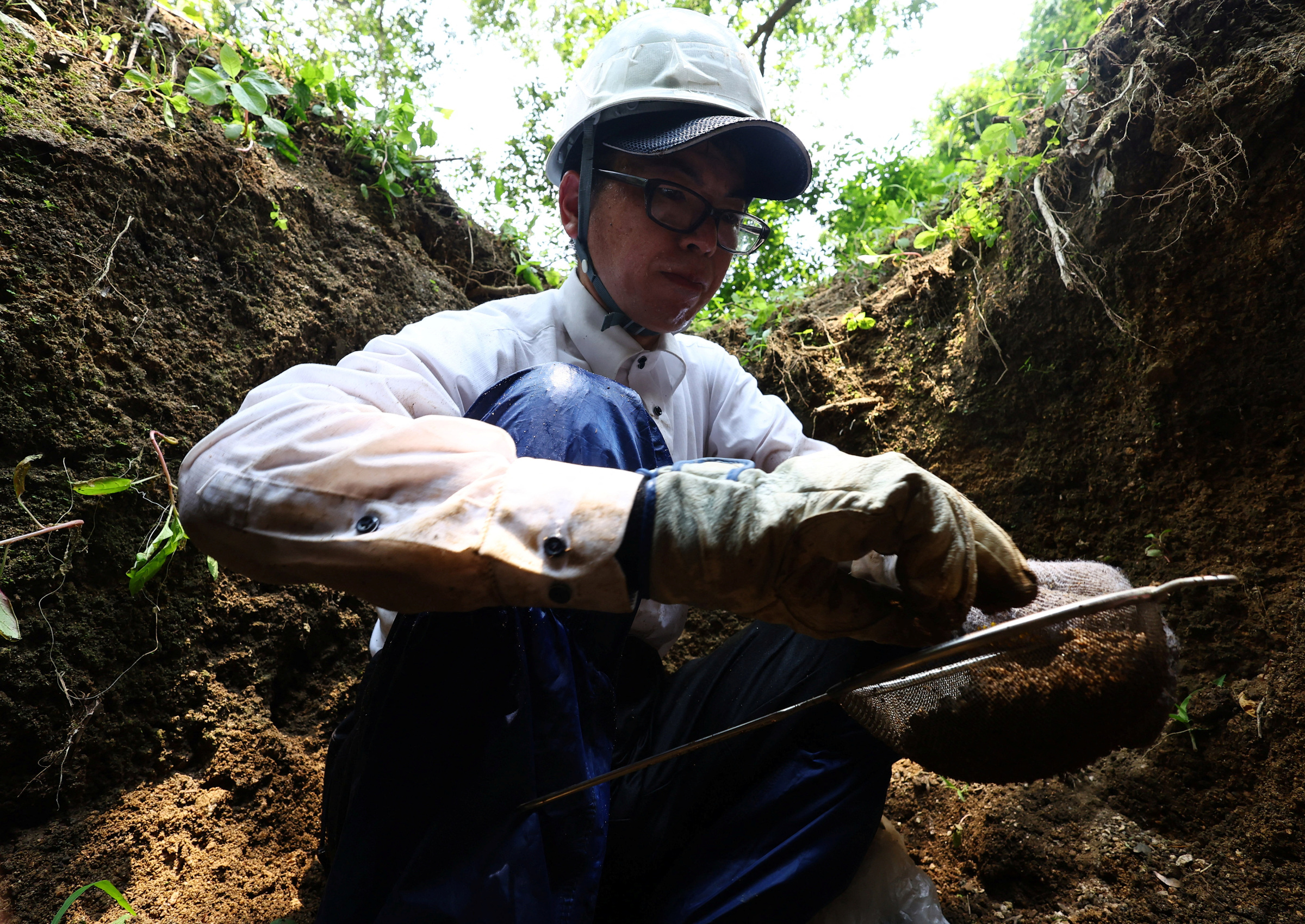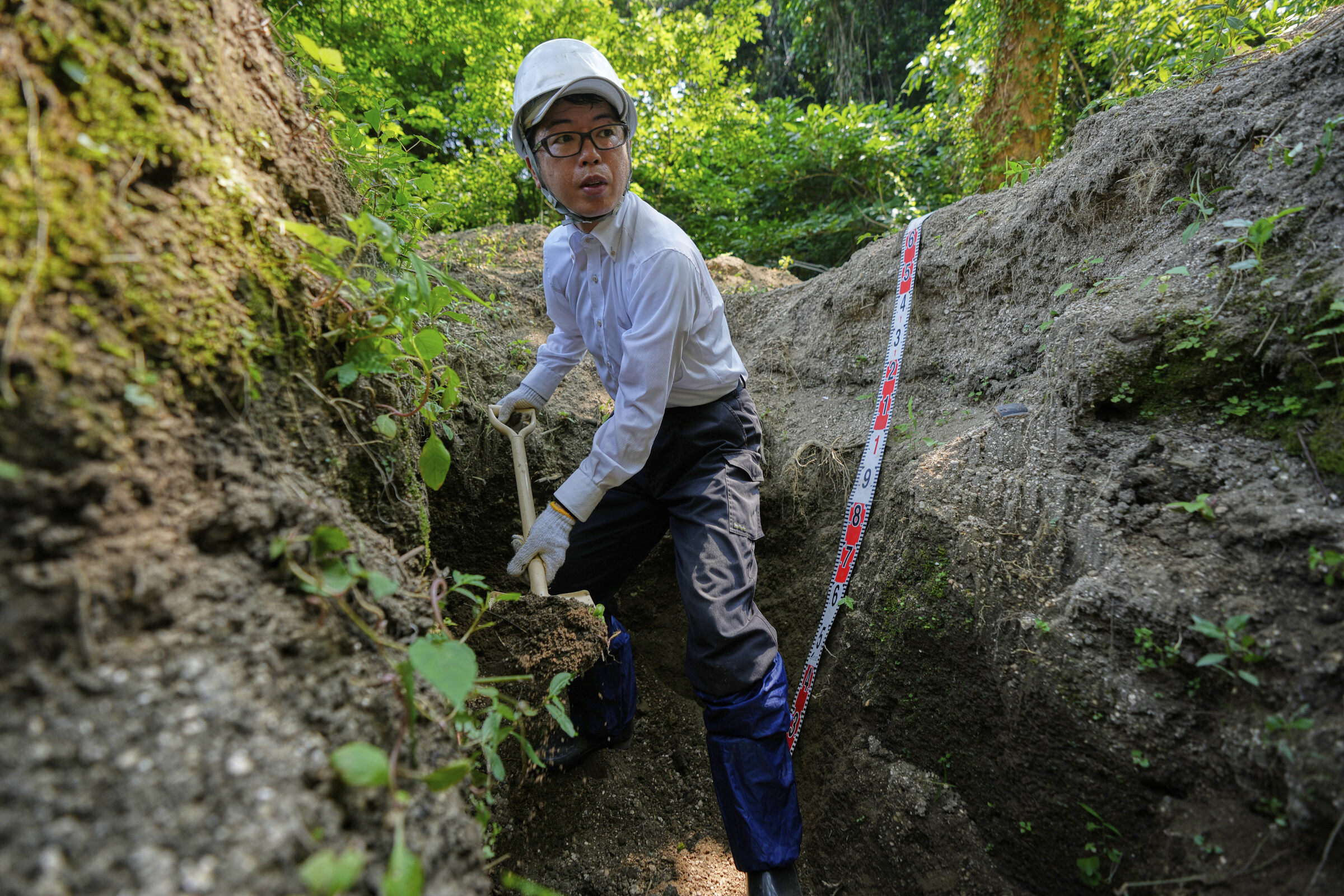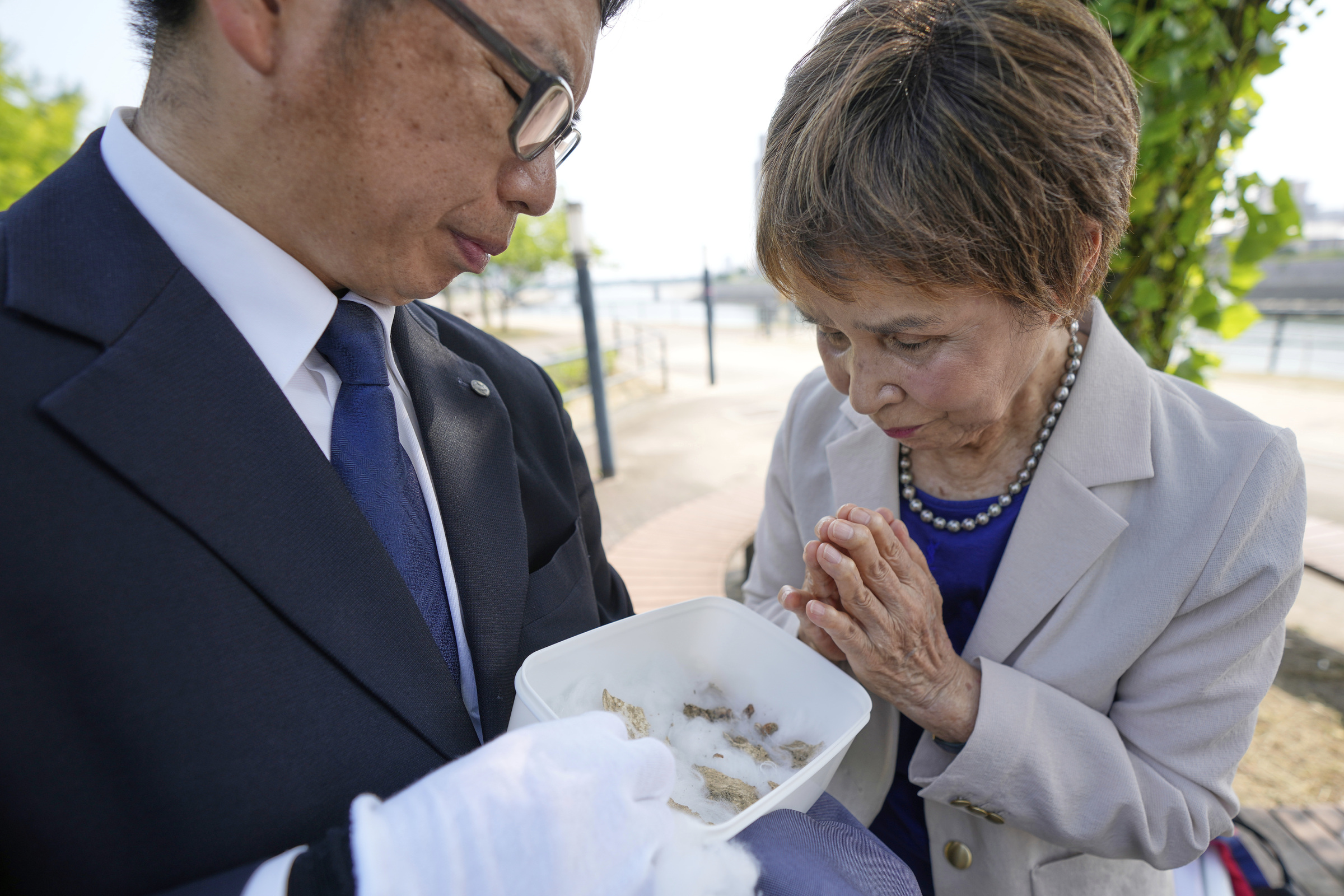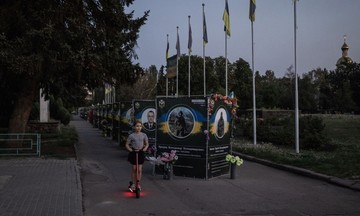On 6/8/1945, the US dropped an atomic bomb on Hiroshima, in western Japan, killing at least 78,000 people and injuring countless others. Ninoshima, a small island about 4 km south of the hypocenter, became a makeshift hospital. In the weeks that followed, about 10,000 victims, both dead and dying, were transported to Ninoshima by military boats.
Historical records indicate that due to poor medical conditions, only a few hundred survived by the time the makeshift hospital closed on 25/8 of that year. The dead were buried hastily, amidst the chaos, at various locations.
Since 1947, the remains of about 3,000 victims brought to Ninoshima have been found, mostly in air raid shelters. However, eyewitness accounts suggest that many more remain buried.
In 2014, after receiving a tip from a local resident's son about a possible burial site on Ninoshima, 47-year-old Rebun Kayo began saving money. Four years later, the Hiroshima University researcher embarked on a solitary quest to recover the victims' remains.
 |
Rebun Kayo searches for the remains of victims of the 1945 atomic bombing of Hiroshima on Ninoshima Island on 5/7. Photo: Reuters |
Rebun Kayo searches for the remains of victims of the 1945 atomic bombing of Hiroshima on Ninoshima Island on 5/7. Photo: Reuters
Kayo travels to Ninoshima dozens of times a year. Like many other volunteers, he is driven by a desire to honor the victims and bring solace to survivors still haunted by the loss of loved ones.
"For these people, the war isn't over until they find their relatives," Kayo told the Associated Press (AP).
On a sunny morning in early July, Kayo returned to an excavation site to resume work he had begun three weeks earlier. Wearing rubber boots and a hard hat, he sprayed himself with insect repellent.
He placed chrysanthemum flowers, prayed, and then carefully began shoveling gravel from a bathtub-sized pit. Once the soil was soft enough, he used a sieve to search for bone fragments. After more than an hour and a half, he found two small, thumb-sized fragments, which he carefully placed in a box.
To date, Kayo has found about 100 bone fragments, including pieces of skulls and an infant's jawbone with several tiny teeth.
"That child was buried here alone all these years," he said. "It’s unbearable to think about."
Kayo plans to take all the bone fragments to a Buddhist temple so the souls can rest in peace.
 |
Rebun Kayo searches for the remains of victims of the 1945 atomic bombing of Hiroshima on Ninoshima Island on 8/7. Photo: AP |
Rebun Kayo searches for the remains of victims of the 1945 atomic bombing of Hiroshima on Ninoshima Island on 8/7. Photo: AP
Among those still grappling with the bombing's aftermath is 83-year-old Tamiko Sora. At the age of three, Sora, her parents, and two sisters were 1.4 km from the hypocenter. The blast destroyed their home and burned Sora's face, but most of her family survived.
As her family made their way to relatives, Sora encountered a five-year-old girl named Hiroko, who was alone, and a badly burned woman begging for help for the child in her arms. Sora has often thought of them and regretted that her family couldn't help. They later searched for Hiroko in orphanages, but to no avail.
Sora believes that those she met that day, along with her missing aunt and uncle, may have been taken to Ninoshima Island.
According to Hiroshima city records, just two hours after the blast, victims began arriving by boat from Hiroshima to the island's Quarantine Station Number 2. The buildings quickly filled with the severely injured. Many died en route. The sheer number of victims forced imperial Japanese soldiers to work around the clock, cremating and burying the dead.
Eiko Gishi, then 18, was tasked with transporting patients from the pier to the quarantine area for first aid. He and other soldiers had to cut bamboo to make cups and trays. Many of the severely injured died after their first sip of water.
In his memoir published by the city of Hiroshima, Gishi recounted how soldiers initially handled each body with care, but were soon overwhelmed. They even resorted to using the crematorium meant for military horses, but it wasn't enough. Eventually, they were forced to place bodies in air raid shelters and mass graves.
"I was stunned into shock when I saw the first group of patients brought to the island," former military doctor Yoshitaka Kohara wrote in 1992. "I was used to seeing badly injured soldiers on the battlefield, but I had never seen anyone in such a devastating and miserable condition. It was hell on earth."
Kohara remained at the makeshift hospital until it closed with about 500 survivors. He recalled the faces of the victims when news of the war's end arrived on 15/8/1945. They were blank, "tears flowed from their bruised eyes, and no one spoke a word."
 |
Tamiko Sora prays before the remains found on Ninoshima Island on 9/7. Photo: AP |
Tamiko Sora prays before the remains found on Ninoshima Island on 9/7. Photo: AP
After learning about the search for remains on Ninoshima, Sora has visited the island twice to pray at the victims' memorial. "I feel like they are waiting for me to visit," she said. "When I pray, I recite the names of my relatives and tell them I'm well, sharing happy stories."
During a recent visit to Sora at her nursing home, Kayo brought a plastic box containing the child's jawbone and skull fragments he found on Ninoshima. The fragments were carefully placed on soft cotton.
Kayo said he wanted Sora to see the fragments, as they might belong to a child the same age as the girl she met 80 years ago. Sora prayed silently as she looked at the box.
"You were finally found. Welcome back," she whispered to the fragments.
Nhu Tam (From AP, Reuters)












